Bacillus anthracis causes the well-known animal disease anthrax and was discovered by Aloys Pollender in 1849. In 1876 it was able to be reproduced for the first time in the laboratory and identified by Robert Koch as an anthrax pathogen. The first vaccine against the contagious deadly animal disease was developed by Louis Pasteur in 1881 and successfully tested on a large flock of sheep.
What is Bacillus Anthracis?
Bacillus anthracis is the medical name of a bacterium that causes dangerous anthrax in animals and humans. The pathogen, which otherwise only infects people who work with animals (farmers, veterinarians, etc.), became internationally known at the end of the 1990s. During this time there were a number of terrorist attacks with anthrax spores. They were used by the perpetrators as biological weapons and in some cases even caused deaths because the infected could not be treated in time. In 2001, several employees of a US post office died when they came into contact with letters contaminated with Bacillus anthracis spores.
The term anthrax goes back to the significantly enlarged spleen in sick people, which turns black after a while. Anthrax is actually an animal disease. It is extremely rare in humans. It affects people who have frequent contact with animals and their products. The serious and, if left untreated, always fatal disease can affect the skin, respiratory tract and gastrointestinal tract.
Occurrence, Distribution & Properties
Bacillus anthracis occurs in the soil in the form of endospores. The pathogen is also found on the skin, fur and in the body of infected animals and people. It is common all over the world. Its permanent survival in the ground is favored by extreme drought and long fallow land. Anthrax cases are rare in industrialized countries. The disease occurs more frequently in areas with a warm climate and intensive livestock farming.
If people are infected with the bacterium, it is predominantly skin anthrax. Bacillus anthracis is transmitted through endospores formed by the pathogen itself. They arise from the narrower central zone of the bacterium when it is exposed to intense heat or extreme food shortages. It then immediately reduces its metabolic activity and forms a thicker cell membrane. With it it can ensure its long-term survival.
If the endospores get into the bloodstream, they develop into dangerous bacteria that multiply extremely quickly. Bacillus anthracis is highly infectious because its spores survive for decades in the soil and from there enter the animal organism through food. After the grazing animal dies, they spread through its carcass. Animals that have died from anthrax must be cremated immediately. Otherwise the anthrax bacteria go into their spore state and remain in the soil.
The often fatal pathogen is usually transmitted from animal to human. Human-to-human spreads are extremely rare.
Approximately 83 percent of the gram-positive bacteria are branched-chain fatty acids and belong to the Bacillaceae family. They can be up to 6 micrometers long, are immobile, and are rod-shaped. Bacillus anthracis can combine with other bacteria of its kind to form threads and chains. If it gets into a living organism, it immediately surrounds itself with a polyglutamate capsule. It protects the bacterium from being destroyed by animal or human immune cells. Capsule formation is not required in in vitro experiments.
The dangerous anthrax pathogen can now be successfully treated with antibiotics such as doxycycline and ciprofloxacin. Special monoclonal antibodies are available as antitoxins. The prophylactic treatment is carried out with special anthrax vaccines. It is also required in people who are only potentially exposed to the bacterium.
Illnesses & ailments
Bacillus anthracis uses its plasmid pXO1 to form poison molecules that are released when the bacterium is destroyed and destroy the walls of the blood vessels. There is inflammation and bleeding. Part of the poison molecule, the antigen PA, docks onto the receptor of the respective cell and opens it. With the help of a certain enzyme, the toxin blocks the activity of the leukocytes. The enzyme LT, which is also present in the bacterium, makes the remaining immune system inoperable.
Another plasmid called pXO2 forms the protective bacterial capsule. The anthrax pathogen causes skin, lung and intestinal anthrax. If it also spreads through the bloodstream, fatal blood poisoning occurs. In skin anthrax, the bacterium gets into the skin through a wound and forms a crater-like depression with a purulent carbuncle. It is surrounded by a raised infectious ring. A hemorrhagic edema then develops at this point. The carbuncle itself is covered with black scabs as the disease progresses.
If left untreated, skin anthrax lethality is 5 to 20%. If the anthrax spores are inhaled deeply, bronchopneumonia, a special form of pneumonia that also affects the bronchi, occurs. The patient coughs up blood contaminated with bacteria, has chills and a high fever and dies from suffocation (hypoxia) within 3 days without antibiotics.
The very rare intestinal infection with anthrax pathogens is caused by raw consumption of infected meat, offal and uncooked milk. The sick man passes bloody stools and vomits blood because he suffers from hemorrhagic intestinal inflammation. This form of anthrax is also fatal without medication.

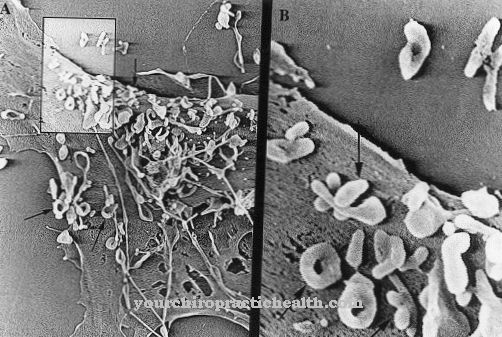
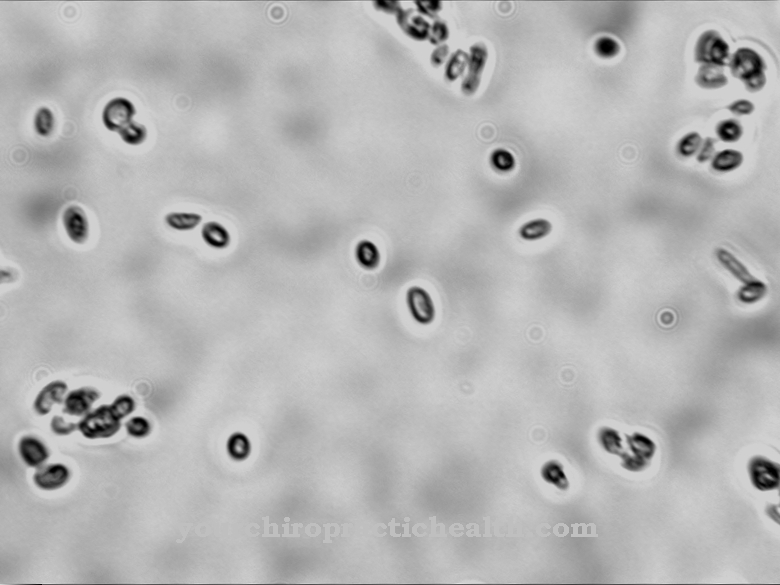
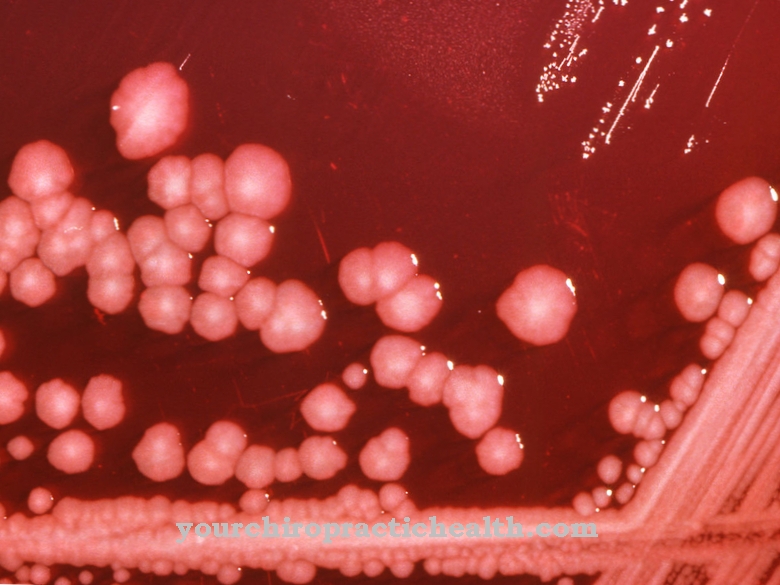
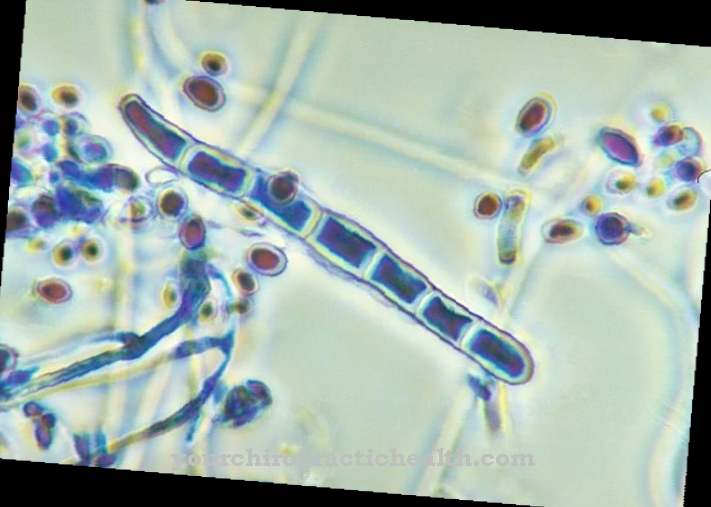

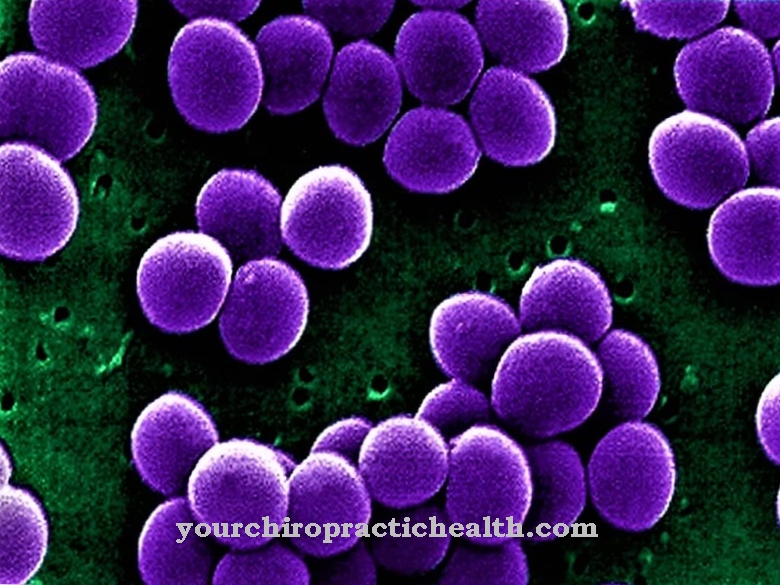


















.jpg)


